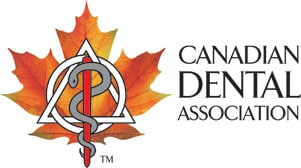Top 5 Ways To Prevent Tooth Decay
What is a cavity?
Let’s start at the beginning…what is a cavity?
By definition, a cavity is a hole or space inside something.
When dentists talk about a tooth having a cavity, we are referring to the destruction of tooth structure by an acidic attack and a cavity or hole where decay has formed.
How does this happen?
Plaque
Plaque is a sticky film of bacteria that forms on our teeth every day. The bacteria in plaque feed on the sugars found in our food and drink and turn them into an acid.
When plaque clings to the tooth, the bacterial acids cause a small hole in the enamel, the outer most layer of the tooth.
Tooth Enamel, The Outer Layer
Enamel is a tooth’s first line of defence.
It protects the more vulnerable layers of tooth structure underneath.
“Enamel is the hardest substance in the human body!”
However, in the presence of acids, minerals from this hard, thick layer of tooth start to leach out. The enamel starts to break down and we get the beginning of a cavity.
When a dentist detects the start of a cavity in this layer, usually by taking an x-ray, it doesn’t always need to be filled.
Fluoride has the potential to Re-mineralize the enamel, and along with better oral hygiene habits and diet changes can stop a cavity at this stage in its tracks. The more that a tooth is exposed to fluoride, the stronger the enamel and more difficult it is for acid to penetrate this layer.
Dentin, The Inner Layer
When a cavity progresses to the next layer of the tooth called the dentin, it can grow very fast as this inner layer is more porous and softer than enamel.
Once a cavity has been diagnosed by a dentist in this layer of the tooth, the tooth is filled to prevent progression of the decay.
The Nerve, Center Of The Tooth
Once decay reaches the center of the tooth, the nerve or pulp, a filling will no longer be enough to prevent progression of bacteria.
Infection is likely to develop if a cavity is allowed to grow and enter the nerve.
More invasive treatment is often needed at this time. Decay progression can happen quite quickly in baby teeth. Compared to adult teeth, baby teeth have a thinner amount of surrounding enamel.
Baby teeth also have a relatively large internal nerve space.
Untreated tooth decay may start as unnoticeable damage to the patient, but it can quickly progress in children to cause pain, infection and potential tooth loss.
The question is: how do we prevent cavities in the first place?
1 – Good oral hygiene … everyday!
No cheating! Daily morning and evening brushing and flossing can go such a long way in prevention of dental decay. The cleaner your teeth, the less plaque and food debris and the less chance of acidic attack.
Ensure you are part of your child’s dental routine.
Most children can brush on their own by age 6 or 7, but flossing is another story.
Help your children get between their teeth by flossing for them until they show you their dexterity is acceptable.
Remember, a tooth brush alone only cleans 3 of 5 surfaces of a tooth!
2 – Fluoride
Fluoride is a naturally occurring element. When exposed to fluoride regularly, your tooth gains superpowers, gets stronger and the amount of acid needed to penetrate it increases. That’s why fluoridated tap water is superior to bottled water for your dental health, especially in the GTA where there is excellent quality control.
Brushing with fluoride toothpaste twice a day and getting regular fluoride treatments during your dental visits will strengthen the enamel of your tooth and make it more resistant to acidic attacks.
3 – A healthy balanced diet low in sugar and sticky foods
When you eat foods with sugars and starches, bacteria in your mouth try to break these foods down. This activity produces an acidic byproduct that can be harmful to your teeth.
All sugars and starches are natural and many are organic – so don’t be fooled.
4 – Regular visits to the dentist
The best filling is no filling! However, the smaller it is, the better. Smaller cavities destroy less of your natural tooth structure and thus, require a smaller filling.
Smaller fillings are more easily maintained in the long term and are less likely to require replacement later.
5 – Sealants
A sealant is a plastic coating that can be applied to the biting surface of your tooth, making decay less likely.
Not every tooth needs to be preventatively sealed, but very groovy teeth will retain more food debris than shallower surfaces and are more at risk for decay. However, sealants cannot be applied in between your teeth, so the need for nightly flossing still exists.

Read my article “Top 5 Questions My Patients Ask Me” such as “when should I bring my infant for their first dental visit?”
Good Dental Health Never Takes A Day Off
I hope these five rules have helped you understand the basics around tooth decay and prevention. Dental health isn’t very complicated but does require good habits and consistency.

The Canadian Dental Association has great information on cavities (link) and here’s information on early childhood tooth decay).










